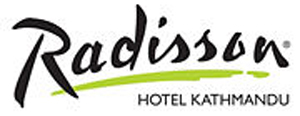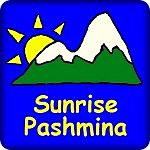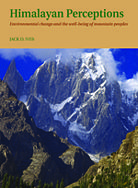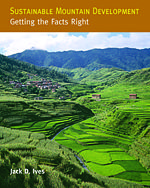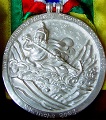 |
The Sir Edmund Hillary Mountain Legacy Medal |
 |
Presentation of 2013 Hillary Medal
All MedalistsHillary Medal Presentation Invitation [pdf]

On March 17, 2014, Peter Hillary presented the sixth Sir Edmund Hillary Mountain Legacy Medal to Dr. Harshwanti Bisht.
Above, the illuminated marquee at ICIMOD headquarters, Kathmandu, where the Medal was presented.


Kumar P. Mainali, President of Mountain Legacy, hands over the Sir Edmund Hillary Mountain Legacy Medal to Peter Hillary.
Welcoming Remarks by Kumar Mainali
My name is Kumar Mainali, and I am the editor of Himalayan Journal of Sciences and the president of Mountain Legacy, a small Nepalese NGO one of whose projects is the Sir Edmund Hillary Mountain Legacy Medal. Both the medal and the Hillary Model of development that it celebrates are essentially expressions of appreciation and gratitude, so before I speak about them, I would like to say a few words of gratitude to our collaborators and sponsors.
Hillary Medal Presentation video, Part One. Remarks by Kumar Mainali, President of Mountain Legacy
First of all, I want to thank you all, whom I count among our collaborators. Specifically speaking about this event today, I would like to thank ICIMOD, particularly the director general Dr David Molden, for hosting this program, and for sponsoring the High Tea. Many of the staff at ICIMOD, including Nira Gurung, Sudas Sharma, Anja Rasmussen, Dharma Maharjan, Subasana Shrestha, and Prerna Thapa helped in the preparation of this program. Our special guests include Dr. Gabriel Campbell, former director general of ICIMOD. Tenzin Norbu, world famous artist, who was kind enough to design our medal. Sue Badyari, CEO of World Expeditions, has helped for years with guidance and generous financial support; Sarah Hunt, also from World Expeditions, has provided extensive logistical support. Uma Khakurel, from World Expeditions' Kathmandu partner Highland Excursions, assisted in logistics and arranged for the exceedingly generous contributions of the Radisson Hotel.
Some of our past medalists are here with us today. Scott MacLennan, director of The Mountain Fund, has founded multiple clinics in remote mountainous areas of Nepal, a hospital, an orphanage for AIDs children, a women's leadership training program, and on and on. [Note: Scott MacLennan was actually unable to attend, due to the breakdown of his car outside Kathmandu Valley.] Ang Rita Sherpa of The Mountain Institute received the 2011 Hillary Medal for projects in inhabited protected areas of mountains in Nepal, Central Asia, and South America.
I want to thank two people who weren't able to be here tonight. First, Dr Beau Beza, professor at Royal Melbourne Institute of Technology University, chair of Hillary Medal Selection Committee. Dr Beza's role in managing the selection of medal recipients and the presentation ceremonies has been supported by RMIT University since 2003. Speaking personally, I want to specially thank Dr. Jack Ives who has been our mentor for many years. Our sister organization Himalayan Association for the Advancement of Science published two of Jack's most recent books: Himalayan Perceptions and Sustainable Mountain Development: Getting the Facts Right.
I will conclude by presenting someone who needs no introduction: Director General of ICIMOD, Dr David Molden.
Welcome to ICIMOD!
Remarks by ICIMOD Director General Dr. David Molden
I'd like to welcome all of you to ICIMOD headquarters. It's a great honor for ICIMOD to be hosting this very special event and to present the Sir Edmund Hillary Mountain Legacy Medal. [Text continued below video link]
Hillary Medal Presentation video, Part Two. Dr. David Molden's welcoming remarks.
|
ICIMOD, by the way, is the International Center for Integrated Mountain Development. We're a knowledge-learning and knowledge-sharing and -enabling center for what we call the Hindu Kush Himalayan region. Basically we have eight countries, clear from Afghanistan to Myanmar: that's Afghanistan, Pakistan, Nepal, Bhutan, India, China, Bangladesh, and Myanmar. Our mission is to enable sustainable and resilient mountain development, and our vision is that men, women and children of the Hindu Kush Himalayas enjoy an improved livelihood and a healthy environment. We generate and share knowledge about how people adapt to climate change (and all kinds of changes), taking a community-based approach. We work on conservation of landscapes, often working between countries. In this very room we have meetings almost twice a week where we get people from our different member countries, places like India, China, Nepal, discussing issues of mountains together. So it really is a regional collaboration here. We do a lot of work on the cryosphere, answering some of the bigger questions about what's happening to the glaciers, what's happening to our snow and ice and to our water resources, especially with climate change. We have a program where we work with remote sensing and GIS to fill in some of the big data gaps that we see in this region, and finally we have what we call a Himalayan university consortium where we focus on capacity building for students in the region. Our work is all very much about knowledge sharing and regional collaboration. Let me also use this occasion to introduce another initiative of ICIMOD to promote Women, Gender, and Environment in Mountains (WGEM). It's a Web-based database of women experts from this region and beyond. I think it's a wonderful opportunity that we have a fantastic woman leader here to inspire us in that direction. So if anybody is interested, please contact us for more information. We're certainly honored to have Dr. Harshwanti Bisht with us tonight. She is a recognized leader and certainly an inspiration to us all. An accomplished mountaineer, she was amongst the first three women to summit the main peak of Nanda Devi, and her valuable contributions to the Gangotri area in Uttarakhand are highly recognized. I'm pleased to welcome you, Dr. Bisht, to ICIMOD, now and in the future, and I congratulate you on this award. |
 Dr. David Molden, Director General of the International Center for Integrated Mountain Development, host of the Hillary Medal presentation event. |
The Hillary Model behind the Hillary Medal
Remarks by Kumar P. Mainali
The Sir Edmund Hillary Mountain Legacy Medal is a project of Mountain Legacy, a Nepalese NGO. Both the NGO and medal were initiated by unanimous resolution of the 2003 Namche Conference: Parks, People and Mountain Tourism. The Hillary Medal was fully authorized by Sir Edmund, and the selection process is administered by the Environment and Planning Program at The Royal Melbourne Institute of Technology University, in cooperation with Peter Hillary.
Hillary Medal Presentation video, Part Three. Kumar Mainali speaks about the Hillary Model of development behind the Hillary Medal
We all know the story of Sir John Hunt's expedition in 1953, which placed two climbers at the summit of the highest point on Earth. The triumph of this team, and particularly of the two climbers who happened to complete the mission, stands as a culminating achievement in human exploration of our planet. However, for us, what is of far greater significance is the model of development that Edmund Hillary pioneered after that climb. For centuries, the model of development had been largely one-sided: whether colonial, evangelical, or ostensibly philanthropic, the developer would unilaterally push an agenda conceived without input from the impacted communities. Because stakeholders were not integrated into the project at the outset, planners failed to understand or respect the needs and complex constraints of the intended beneficiaries of the donor's largesse.
Unlike earlier versions of international philanthropy, Hillary's work was inspired by gratitude towards the individuals and communities that helped him in the climb as well as an appreciation of the extraordinary ecosystem that he was fortunate enough to visit in a pristine state. This motivation immediately precluded top-down development strategies. Sir Edmund's sense of gratitude and responsibility made him want to return the favor, with what became a remarkably ambitious and successful range of projects. The Hillary model of development naturally emphasizes the human dimension. This model integrates communities and ecosystems in mountain development. The broader focus makes development projects more likely to succeed and cheaper to implement because it invests ownership and responsibility in the communities.
The Hillary Medal both recognizes Sir Edmund's life-long commitment to the welfare of mountain people and their environment and also encourages the continuing emulation of his example. Sir Edmund's expression of gratitude to the Sherpa people has had important repercussions far beyond the projects he initiated. Sir Edmund has inspired many of us to undertake Hillary-style development in gratitude to the communities and ecosystems that have made possible our own recreation and adventure opportunities, and we all hope our own work will inspire further efforts by others. Gratitude and recognition are key to the sustainability and proliferation of these efforts, and Mountain Legacy is constituted in order to sustain Sir Edmund's legacy by awarding the Sir Edmund Hillary Mountain Legacy Medal to a representative handful of his successors. We present this award to those individuals in recognition for their remarkable service in conservation of culture and nature in mountainous regions. But in so doing we also honor the type of work they engaged in, which is now undertaken by so many of us in the development community.
The recipients of the medal since 2003 represent a group of extraordinary people who have contributed towards the welfare of mountainous people and their environment. Our medal recipients' contributions are briefly mentioned in the handout. These recipients are diverse in their expertise, scope, geographic relevance of their service, and they have uniquely contributed towards the remote Himalayan communities and environments. However, they all overlap when it comes to their approach: understand the local stakeholders, connect to them, protect their homelands. They all share a deep realization that life exists with the consent of environment. In her book Tourism in the Garhwal Himalaya, Dr. Harshwanti Bisht: Mountains are sacred because they possess beauty and they inspire mankind to meditate and grow spiritually. I believe that the result of that meditation, the spiritual growth Dr. Bisht refers to, is the appreciation of universal connectedness, and the understanding that our gratitude for this beauty must lead us to stewardship and sharing of the bounty we enjoy.
Now I would like to present Mr Peter Hillary.
The Spirit of Ed Hillary: Expanding the Realm of Possibility
Speech by Peter Hillary
Thank you, Kumar. It's wonderful to be here, it's wonderful to see such a great group of people. And thank you, Dr. Molden, for letting us have this event right here.
Last year was the sixtieth anniversary of that first climb of Mt. Everest, and of course there were all sort of celebrations. I was over in London for a special event at the Royal Geographical Society, and while I was preparing to go there I found myself thinking about what was so special about that event, the first ascent of Mount Everest. I just want to read you a paragraph that I wrote about it.
While Ed Hillary and Tenzing Norgay just wanted to climb the mountain because no one had reached the summit, it never occurred to them that this daring climb into the physical and physiological unknown expanded the realm of possibility for every one of us down near sea level -- [not that Kathmandu is actually near see level, but we'll just let that go] -- the fact that we too could climb the world's highest mountain if we wanted to, and in the same way Neil Armstrong expanded our perception of what is possible by putting a bootprint on the moon. Now most of us will never climb Mt Everest or land on the moon... but we can! That is a giant leap in terms of what we think is possible, and now we know that there are few barriers to our capability given the skills, innovation, motivation, time, and teamwork. The truth is that we are all liberated by the successes of others, because their successes show that it can be done.
And I think that is what Ed Hillary and Tenzing Norgay did on that British expedition back there in 1953. But as it has been pointed out, very quickly my father very quickly sort of moved on... with other expeditions going to the South Pole, and many expeditions in the Himalayas, but he also began working with the local people up there around the foot of the mountain that had given him and Tenzing that great adventure.
Hillary Medal Presentation video, Part Four. Peter Hillary speaks about the legacy of his father
And you know what? It was never easy, even for a man of the stature of Ed Hillary, to raise money. So what he would do was resort to making little films, and I remember clearly -- and I think this illustrates the sort of man my father was -- we were making a short film to use around the various foundations around the world, and Mingma Tsering, my father and I were sitting on a large boulder on the outskirts of Khumjung village, the mountains out behind, and the idea was we would be talking about mountaineering -- the camera was at a steep angle to make it look as if we were high in the hills and talking about what we wanted to accomplish among the villages and foothills of the great mountain. And of course the cameras rolling, and this was all working, we've got ice axes, we were really looking the part, and around the corner came a group of people, a group of trekkers, and one of them looks up and we immediately assume that he's recognized the first man to climb Mt. Everest. And he goes, Excuse me, excuse me, um - we thought, yup, he's definitely recognized Ed Hillary, but I thought you might like to know -- and he's pointing straight at my father, who was just casually holding his ice ax, and he said, but REAL mountaineers don't hold their ice ax like that. Well, we thanked him for his observations, and he trekked on, and we were sort of sniggering with laughter a little bit because we knew that as he went down the trail he would inevitably be told who he had just given his mountaineering advice to. But what I rather liked about that was that Dad found it funny, too -- he didn't find it impudent or difficult to deal with. And it's because he had a genuine affection for the people he climbed with, and he wanted to make a difference.
And it started around the campfire, sitting with a group of local Nepalis, and he asked them, If there wass one thing I could do, what would it be? And the answer was, Would you build us a school? And I think that was a remarkable start. And that school building in Khumjung is still there, a little aluminium building, and the expeditions kept happening. They went on high altitude physiological research expeditions... they even looked for the yeti and they had Martin Pperkins from the United States involved, more climbing expeditions, and there were more petitions from local people. And over the years more than forty-two schools and hospitals were built in the Solu-Khumbu region. Richard Blum from the American Himalayan Foundation told me about a decade or so ago that the Ed Hillary approach for such programs had really become a model for all small successful programs -- lean, small, effective, with great people networks, and I think that's true. But just a few years ago, 2010, I was in Kathmandu, and I had breakfast with Dr. Mingma Gyalzen, over here, and we were having a wonderful breakfast, and I'll never forget, Dr. Mingma, when you said to me, Your father just kept coming to Nepal every year -- this man from the other side of the world, so far away, and he just kept on giving. And I greatly respect what you said and the emotion that you said it with, and the fact that you said that you would also be doing the same, and I really salute you and the programs that you run, and greatly appreciate the comments that you made about my father.
But I'm here now to go with a group from the Australian Himalayan Foundation. We're supporting a teacher training program in the Solu area, and so we're flying into Kangal in two days' time, and down into some quite remote villages, and we'll be actually going to see some of these programs in position in some of the schools. You know, the sixtieth anniversary at the RGS was an astonishing experience. The Queen and Prince Philip were there, we were given a series of presentations, the British do it absolutely on the knocker, at 8 pm precisely there was a knock at the door, everyone stood up, and in came Her Majesty the Queen followed by Prince Philip, and onto the stage with the various mountaineering speakers there from the Royal Geographical Society. And I shook the Queen's hand, and then I shook the hand of Prince Phillip. And you know how it is, you're sort of wondering what to say, and I said, You know, I could just imagine how much my father would have loved to be here for this event, and Prince Philip straightaway looked up in the air and he said, Oh well, he'll be around here somewhere. You know what? I think the spirit of Ed Hillary IS around here somewhere. I can feel it here. I can it with the various foundations, the various education programs that we're involved in, and in fact in the award that we're involved in here tonight. And perhaps rather appropriately a new film has come out about my father, Beyond the Edge, and we're hoping that it will be shown here in Kathmandu at some stage. It's about my father and his climb on Mt. Everest. It's in 3-D, certainly grabs the attention of the younger generation, and it utilizes the old 1953 footage with a whole lot of reenactments, mostly done in New Zealand, to fill in some of the gaps.
The Hillary Medal, and that's what we're here to present tonight, was inspired by Ed Hillary. It was inspired by the energy of a very energetic man, but I think a man with a lot of empathy, a lot of generosity -- he was certainly an extremely generous guy. And I'm very proud to say that the other recipients of the award have been a pretty remarkable group. As Kumar mentioned, we've had Michael Schmitz and Helen Cawley, Alton Byers, Papa Tony Freake, Scott MacLennan, and a very old friend of mine, Ang Rita Sherpa. And it's really a great pleasure for me tonight to present the recipient of the Hillary Medal for 2014, Dr. Harshwanti Bisht, from India.


